Screening Flavonoids of Ethyl Acetate Extract from Matoa Tree Bark (Pometia pinnata) Using UV-Vis Spectrophotometry Method
DOI:
10.29303/jpm.v20i7.10099Published:
2025-11-25Issue:
Vol. 20 No. 7 (2025): in ProgressKeywords:
Flavonoids; Matoa Tree Bark; Secondary Metabolites; UV-Vis SpectrophotometerArticles
Downloads
How to Cite
Downloads
Abstract
Matoa tree bark is a plant that contains flavonoid chemical compounds believed to be a traditional medicine in various alternative treatments. Therefore, it is important to measure its flavonoid content. Ethyl acetate extracts were prepared using the maceration method at durations of 3 x 24 hours. The aim of this study was to determine the flavonoid compound content and levels in matoa tree bark (Pometia pinnata) using UV-Vis spectrophotometry. Qualitative analysis was carried out using NaOH reagent and the wilstater cyanidin test, both of which showed positive results for containing flavonoid compounds, indicated by an orange color change. Quantitative analysis using a regression quercetin standard curve with an R2 value of 0,9844 revealed a flavonoid content of 2.712%. These results indicate that matoa tree bark extract has a high flavonoid content and has the potential to be developed as a herbal medicine formulation.
References
N. U. M. Br. Turnip and Y. L. Panjaitan, “Activity Test Ethanol Extract Matoa (Pometia Pinnata) Antinflammation Against Male Rats Induced Caragenan,” Jurnal Farmasimed (Jfm), vol. 5, no. 1, pp. 57–61, 2022, doi: 10.35451/jfm.v5i1.1280.
Noveli Damayanti, Uji Stabilitas Karakter Buah Matoa (Pometia Pinnata) Kulit Kuning Varietas Berkah Di Kota Pekanbaru. 2023.
H. Rochaeni, C. Irawan, Hanafi, P. S. Lestari, L. Sulistiawaty, and I. L. D. Putri, “The antidiabetic and anti-microbial activity analyses in the extract of methanol, ethyl acetate, and hexane from flesh of Matoa (Pometia pinnata J. R. Forst. & G. Forst),” Trends in Sciences, vol. 18, no. 22, 2021, doi: 10.48048/tis.2021.485.
R. Rossalinda, F. Wijayanti, and D. Iskandar, “Effectiveness of Matoa Leaf (Pometia pinnata) Extract as an Antibacterial Staphylococcus epidermidis,” Stannum : Jurnal Sains dan Terapan Kimia, vol. 3, no. 1, pp. 1–8, 2021, doi: 10.33019/jstk.v3i1.2133.
J. Pangisian, M. S. Sangi, and M. Kumaunang, “Analisis Senyawa Metabolit Sekunder dan Uji Aktivitas Antioksidan serta Antibakteri Biji Buah Pangi (Pangium edule Reinw),” Jurnal LPPM Bidang Sains dan Teknologi, vol. 7, no. 1, pp. 11–19, 2022.
I. Ayu Putu Widiasriani, N. N. W. Udayani, G. A. Putri Triansyah, N. P. E. Mahita Kumari Dewi, N. L. W. Eva Wulandari, and A. A. S. Sri Prabandari, “Artikel Review: Peran Antioksidan Flavonoid dalam Menghambat Radikal Bebas,” Journal Syifa Sciences and Clinical Research, vol. 6, no. 2, pp. 188–197, 2024, doi: 10.37311/jsscr.v6i2.27055.
D. R. Badaring, S. P. M. Sari, N. Satrina, W. Wulan, and S. A. R. Lembang, “Uji Ekstrak Daun Maja (Aegle marmelos L.) terhadap Pertumbuhan Bakteri Escherichia coli dan Staphylococcus aureus INDONESIAN JOURNAL OF FUNDAMENTAL SCIENCES (IJFS),” Indonesian Journal of Fundamental Sciences, vol. 6, no. 1, pp. 16–26, 2020.
L. L. Pote, “Pengaruh Jenis Pelarut Terhadap Kadar Senyawa Metabolit Sekunder dan Aktivitas Antioksidan Ekstrak Kulit Batang Lino (Grewia koordersiana Burret),” Akta Kimia Indonesia, vol. 9, no. 1, p. 70, 2024, doi: 10.12962/j25493736.v9i1.20177.
Putri, “Penetapan Kadar Flavonoid Total Ekstrak Etanol Daun Pare Hutan (Momordica Balsamina) Dengan Metode Spektrofotometri UV-Vis,” pp. 1–25, 2023.
F. Damayanti, A. Malik, and A. A. Dahlia, “Skrining Fitokimia dan Penetapan Kadar Flavonoid Total Ekstrak Daun Matoa (Pometia pinnata) Menggunakan Metode Spektrofotometri UV-Vis,” Makassar Natural Product Journal, vol. 1, no. 4, pp. 2023–191, 2023.
Putri dan Lubis, “Skrining Fitokimia Ekstrak Etil Asetat Daun Kalayu (Erioglossum rubiginosum (Roxb.) Blum),” 2020.
N. Y. Lindawati and S. H. Ma’ruf, “Penetapan Kadar Total Flavonoid Ekstrak Etanol Kacang Merah (Phaseolus Vulgaris L.) Secara Spektrofotometri Visibel,” Jurnal Ilmiah Manuntung, vol. 6, no. 1, pp. 83–91, 2020, doi: 10.51352/jim.v6i1.312.
H. Hasan, A. M. Andy Suryadi, S. Bahri, and N. L. Widiastuti, “Penentuan Kadar Flavonoid Daun Rumput Knop (Hyptis capitata Jacq.) Menggunakan Spektrofotometri UV-Vis,” Journal Syifa Sciences and Clinical Research, vol. 5, no. 2, pp. 200–211, 2023, doi: 10.37311/jsscr.v5i2.19371.
H. M. Mashar, Itma Annah, Dali, and Teguh Supriyono, “Analisis Kadar Flavonoid Total Fraksi Etil Asetat Kulit Batang Sirsak (Annona Muricata L.) Dengan Metode Spektrofotometri UV-Vis,” Jurnal Kefarmasian Akfarindo, vol. 8, no. 1, pp. 44–49, 2023, doi: 10.37089/jofar.v8i1.161.
L. L. Pote, “Pengaruh Jenis Pelarut Terhadap Kadar Senyawa Metabolit Sekunder dan Aktivitas Antioksidan Ekstrak Kulit Batang Lino (Grewia koordersiana Burret),” Akta Kimia Indonesia, vol. 9, no. 1, p. 70, 2024, doi: 10.12962/j25493736.v9i1.20177.
A. T. Kusuma, A. Adelah, Z. Abidin, and A. Najib, “Penentuan Kadar Flavonoid Ekstrak Etil Asetat Daun Sukun (Artocarpus altilis),” ad-Dawaa’ Journal of Pharmaceutical Sciences, vol. 1, no. 1, pp. 25–31, 2018, doi: 10.24252/djps.v1i1.6427.
K. Kusnadi and E. T. Devi, “Isolasi Dan Identifikasi Senyawa Flavanoid Pada Ekstrak Daun Seledri (Apium Graveolens L.) Dengan Metode Refluks,” PSEJ (Pancasakti Science Education Journal), vol. 2, no. 1, pp. 56–67, 2017, doi: 10.24905/psej.v2i1.675.
Safitri, Penentuan Kadar Total Flavonoid, Fenol dan Tanin pada Ekstrak Daun Matoa (Pometia pinnata JR & J.G Forster) Menggunakan Metode Spektrofotmetri UV-Vis. 2023.
H. A. Muiz, S. Wulandari, and A. Primadiamanti2, “Ethanol Extract Against Staphylococcus aureus by Disc Diffusion Method,” Jurnal Analisis Farmasi, vol. 6, no. 2, pp. 84–89, 2021.
M. Fikri, anna khumaira Sari, and D. R. Febrianti, “Pengukuran Rendemen Dan Identifikasi Senyawa Metabolit Sekunder Pada Ekstrak Daun Terap (Artocarpus Odoratissimus Blanco) Dengan Variasi Pelarut,” Jurnal Insan Farmasi Indonesia, vol. 2, no. 2, 2019, doi: 10.36387/jifi.v2i2.400.
A. R. A. Armelia Rhaihana Bachtiar, Selpida Handayani, “Penetapan Kadar Flavonoid Total Buah Dengen (Dillenia serrata) Menggunakan Metode Spektrofotometri UV-Vis,” Makassar Natural Product Journal (MNPJ), vol. 1, no. 2, pp. 86–101, 2023, doi: 10.33096/mnpj.v1i2.36.
A. Ni’ma, Kadar Total Flavonoid Ekstrak Etanol Daun Adas (Foeniculum Vulgare) Secara Spektrofotometri Visibel. 2021.
L. P. F. Putri, W.S., Warditiana, N.K., Larasanty, “Skrining Fitokimia Ekstrak Etil Asetat Kulit Buah Manggis (Garcinia mangostana L),” Proceedings of the National Academy of Sciences, vol. 3, no. 1, pp. 1–15, 2015.
F. Salsabila, J. Posangi, C. D. Mambo, F. Fatimawali, A. S. Regina Masengi, and E. Nangoy, “Profil Fitokimia Dan Uji Aktivitas Antioksidan Ekstrak Etanol Daun Pacar Air (Impatiens Balsamina L.) Menggunakan Metode Abts (2,2’-Azinobis(3-Ethylbenzothiazoline-6-Sulfonic Acid),” Jurnal Locus Penelitian dan Pengabdian, vol. 4, no. 2, pp. 1154–1169, 2025, doi: 10.58344/locus.v4i2.3805.
R. Islamiyati, D. E. Mugitasari, L. N. Nafiah, and I. Jayanto, “Uji Aktivitas Antioksidan Ekstrak Etil Asetat Daun Matoa Menggunakan Radikal Bebas DPPH (Difenilpikrilhidrazil),” Pharmacon, vol. Vol 13, pp. 611–618, 2024, doi: 10.35799/pha.13.2024.55951.
W. Rahmah, H. Hamzah, S. Hajar, S. S. Ressandy, and E. M. Putri, “Potensi Ekstrak Buah Matoa (Pometia Pinnata) Sebagai Sumber Antioksidan: Literatur Review,” Jurnal Farmasi Sains dan Praktis (JFSP), vol. 7, no. 1, pp. 59–66, 2021, [Online]. Available: https://journal.unimma.ac.id/index.php/pharmacy/article/view/4240
T. Suzuki, M. Nagata, N. Kagawa, S. Takano, Nahrowi, and J. Nomura, “Anti-obesity effects of matoa (Pometia pinnata) fruit peel powder in high-fat diet-fed rats,” Molecules, vol. 26, no. 21, 2021, doi: 10.3390/molecules26216733.
C. Srisupap, S., & Chaicharoenpong, “In vitro antioxidant and antityrosinase activities of Manilkara kauki.,” 2020.
Z. Gul, A. Akbar, M. Naseem, J. Khan Achakzai, Z. Ur Rehman, and N. Ahmad Khan, “Phytonutrient and antinutrient components profiling of Berberis baluchistanica Ahrendt bark and leaves,” J King Saud Univ Sci, vol. 35, no. 2, p. 102517, 2023, doi: 10.1016/j.jksus.2022.102517.
S. Amin, D. Pebriyanti, S. Qolbiah, and S. N. Candramurti, “Analisis Fitokimia Dan Penetapan Kadar Flavonoid Total Pada Ekstrak Daun Matoa (Pometia pinnata) Dengan Metode Spektrofometri UV-Vis,” Journal of Innovative and Creativity (Joecy), vol. 5, no. 2, pp. 246–254, 2025, doi: 10.31004/joecy.v5i2.164.
A. C. Putri, T. N. Yuliana, M. Suzery, and A. L. N. Aminin, “Total Phenolic, Flavonoid, and LC-MS Analysis of the Ethanolic Extract of Matoa (Pometia pinnata) Leaves from Kudus, Central Java, Indonesia,” Jurnal Kimia Sains dan Aplikasi, vol. 26, no. 12, pp. 477–482, 2024, doi: 10.14710/jksa.26.12.477-482.
Author Biographies
Ratno Budiyanto, Department of Chemistry, Faculty of Mathematics and Science, Annuqayah University
Ach. Kholis, Department of Chemistry, Faculty of Mathematics and Science, Annuqayah University
Taufiqurrahman Taufiqurrahman, Department of Chemistry, Faculty of Mathematics and Science, Annuqayah University
License
Copyright (c) 2025 Ratno Budiyanto, Ach. Kholis, Taufiqurrahman Taufiqurrahman

This work is licensed under a Creative Commons Attribution 4.0 International License.
The following terms apply to authors who publish in this journal:
1. Authors retain copyright and grant the journal first publication rights, with the work simultaneously licensed under a Creative Commons Attribution License 4.0 International License (CC-BY License) that allows others to share the work with an acknowledgment of the work's authorship and first publication in this journal.
2. Authors may enter into separate, additional contractual arrangements for the non-exclusive distribution of the journal's published version of the work (e.g., posting it to an institutional repository or publishing it in a book), acknowledging its initial publication in this journal.
3. Before and during the submission process, authors are permitted and encouraged to post their work online (e.g., in institutional repositories or on their website), as this can lead to productive exchanges as well as earlier and greater citation of published work (See The Effect of Open Access).











